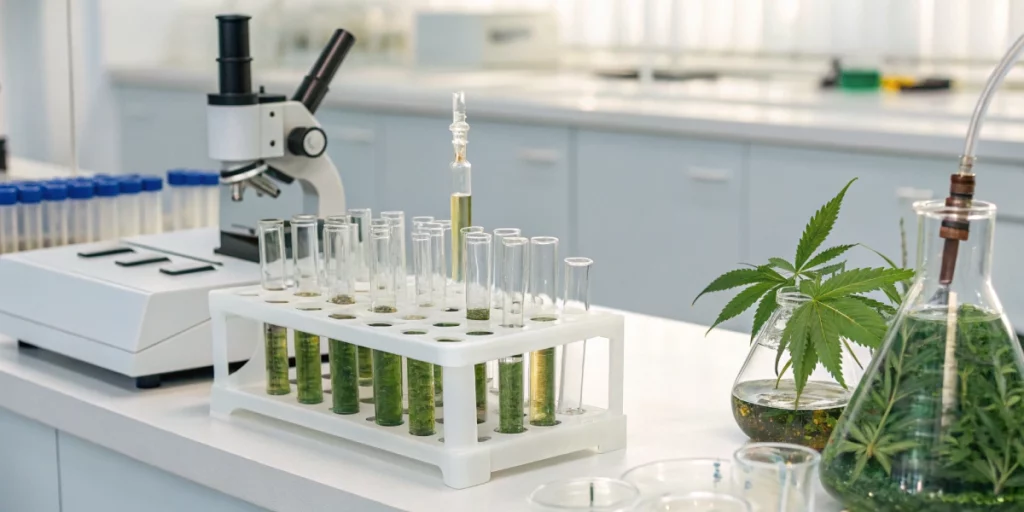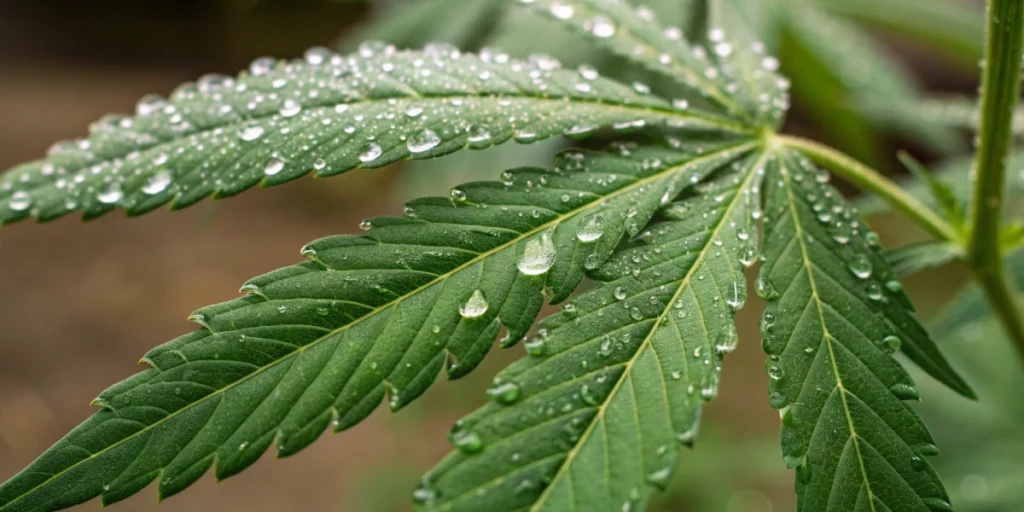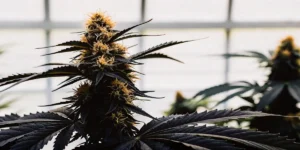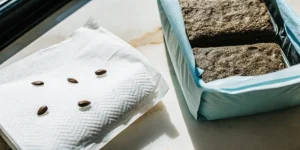Have you ever wondered why some cannabis varieties smell so unique and offer surprising benefits? This article delves deep into caryophyllene Terpene, unraveling its secrets and practical uses. Read on as we reveal simple facts and helpful tips that can transform your appreciation for cannabis aromas and effects. Stay with us to uncover the hidden wonders of this special compound.
Introduction to Caryophyllene Terpene
Definition and Natural Occurrence
Caryophyllene Terpene is a naturally occurring compound found in many plants, including cannabis, cloves, and black pepper. It gives a spicy, woody aroma that many enthusiasts appreciate. This terpene is unique because it interacts with the body’s receptors in unexpected ways. Its natural occurrence in everyday herbs makes it accessible and interesting for those curious about plant compounds. Many users find that this terpene adds character to their cannabis profiles.
caryophyllene Terpene appears in nature in various essential oils and spices. It is not only present in cannabis but also widely distributed in many culinary herbs and spices. Its presence can be detected in the aromatic profiles of these plants, which is why it is highly valued in both food and therapeutic contexts. The natural abundance of this compound makes it an important subject for both growers and users who want to enhance flavor and potential benefits.
Chemical Structure and Key Properties
The chemical structure of caryophyllene Terpene is characterized by a complex bicyclic framework. This structure allows it to interact uniquely with biological systems, giving it notable anti-inflammatory and analgesic properties. Its molecular configuration contributes to its stability, making it effective during extraction and storage. Researchers have found that these key properties support its use in various applications, from enhancing flavor to offering potential therapeutic benefits.
The stability of caryophyllene Terpene is one of its defining features. Its molecular makeup helps it resist degradation, which is valuable for both medicinal and aromatic uses. This stability also means that it can maintain its properties throughout different extraction processes. Growers and extractors appreciate this resilience, as it ensures that the terpene remains potent from harvest to final product. Its chemical integrity is a major reason why it is highly regarded in the cannabis community.
Sensory Attributes of Caryophyllene Terpene
Aroma and Flavor Profile
Caryophyllene Terpene imparts a warm, spicy, and peppery aroma that can be both invigorating and comforting. Its flavor is often described as earthy with a hint of citrus, creating a balanced profile that enhances the overall sensory experience of cannabis. Many find that this terpene adds depth to the flavor without overwhelming other notes. Its distinctive profile makes it a favorite among cultivators and consumers looking for unique sensory attributes in their cannabis.
The sensory impact of Caryophyllene Terpene is significant in shaping the overall character of cannabis. Its aroma and flavor blend well with other terpenes to create complex profiles that appeal to many users. The spicy notes are often appreciated in culinary contexts as well, linking the worlds of cannabis and gourmet cooking. This versatility adds to its popularity among those who value both flavor and potential benefits.
Comparison with Other Terpenes
When compared to other terpenes, caryophyllene Terpene stands out due to its unique spicy and woody scent. Unlike terpenes with floral or citrus tones, it offers a more robust, earthy experience. This difference makes it a complementary addition to many strains, balancing sweeter or lighter aromas with a touch of spice. Its distinctiveness also means that it can be used to tailor specific sensory profiles in cannabis products, making it an essential tool for growers and extractors.
Other terpenes, such as limonene or myrcene, contribute differently to a strain’s overall aroma. While limonene offers bright, citrus notes and myrcene brings musky, herbal qualities, caryophyllene Terpene provides a bold, peppery foundation. This unique quality not only sets it apart but also allows it to work synergistically with other compounds. The balance created by combining these terpenes is what many cannabis users find so appealing and satisfying.

Applications and Benefits of Caryophyllene Terpene
Impact on Cannabis Aroma and Flavor
Caryophyllene Terpene plays a significant function in shaping the aroma and flavor of cannabis. Its presence enhances the spicy and robust characteristics that many strains are known for. This terpene can elevate the sensory appeal of the plant, making each puff more satisfying and memorable. Growers value its impact because it adds a layer of complexity without requiring additional additives. Its influence on taste and smell makes it a sought-after component in many premium cannabis products.
The aromatic benefits of caryophyllene Terpene extend beyond mere flavor enhancement. It also contributes to the overall user experience by creating a more engaging and enjoyable session. The spice and depth provided by this compound can make the difference between a standard and an exceptional product. Many cannabis users appreciate this subtle yet impactful improvement in their products, which adds to the overall quality and appeal of their chosen strains.
Uses in Therapeutic and Industrial Contexts
Beyond its sensory impact, caryophyllene Terpene has found applications in therapeutic and industrial settings. It is known for its anti-inflammatory and analgesic properties, which many find beneficial for relieving pain and reducing inflammation. Its ability to interact with the body’s receptors has sparked interest in its use for wellness products and supplements. Additionally, industries have explored its potential in natural flavorings and fragrances, making it a versatile compound with multiple applications.
The therapeutic potential of caryophyllene Terpene is of great interest to researchers and healthcare providers. Its anti-inflammatory effects may offer benefits for conditions such as arthritis or chronic pain. Industrial uses also highlight its value in creating natural, sustainable products. Whether used in wellness formulations or as a natural additive in foods and cosmetics, this terpene’s versatility makes it an asset across various sectors, further cementing its importance in the cannabis industry.
Cultivation Factors Influencing Caryophyllene Terpene
Impact of Growing Conditions
Growing conditions have a strong influence on the production of caryophyllene Terpene in cannabis. Factors such as light intensity, temperature, and humidity can significantly alter the levels of this terpene in the plant. For many cultivators, optimizing these conditions is key to enhancing the natural aromatic profile of their strains. A well-controlled environment not only boosts overall yield but also ensures that the terpene remains potent and true to its unique characteristics. Paying attention to these factors is essential for producing a high-quality product.
Environmental control is paramount for maximizing the benefits of caryophyllene Terpene. Even small changes in the growing area can lead to variations in terpene levels, which in turn affect flavor and therapeutic properties. Cultivators often monitor their conditions closely, using modern equipment to maintain a stable environment. This careful attention to detail results in plants that consistently produce the desired levels of caryophyllene Terpene, making it easier to achieve a reliable harvest every time.
Genetic Expression Variability
Genetics play a key role in determining the levels of caryophyllene Terpene present in a cannabis plant. Different strains have varying capacities to produce this compound based on their genetic makeup. Some strains naturally express higher levels of caryophyllene Terpene, which can be further enhanced by selective breeding and targeted cultivation practices. This genetic variability allows growers to choose specific strains that meet their desired profiles for aroma, flavor, and potential benefits, ensuring a more tailored cultivation process.
Genetic expression can be influenced by both inherent traits and external cultivation practices. Growers who focus on optimizing their plants’ genetics can achieve a more consistent production of caryophyllene Terpene. By selecting strains with favorable genetic traits, it is possible to enhance the overall quality and uniqueness of the final product. This focus on genetics not only boosts terpene production but also contributes to a more predictable and enjoyable growing process, making it easier to achieve desired outcomes in cannabis cultivation.
Extraction and Preservation of Caryophyllene Terpene
Effective Extraction Methods
Extracting caryophyllene Terpene requires careful attention to preserve its aromatic and therapeutic properties. Techniques such as CO₂ extraction and hydrocarbon methods are popular among professionals because they efficiently separate terpenes from plant material. These methods are designed to minimize heat and light exposure, which can degrade the terpene’s quality. When performed correctly, extraction ensures that the final product retains the full benefits and distinct characteristics of caryophyllene Terpene, making it a valuable addition to various cannabis products.
The extraction process must be managed with precision to avoid compromising the compound’s potency. By employing controlled environments and optimized procedures, extractors can maintain high levels of caryophyllene Terpene. This careful handling is essential for producing extracts that are both pure and effective. Many operators invest in specialized equipment to ensure that every step, from extraction to processing, preserves the natural profile of the terpene. The goal is to deliver a product that truly reflects the inherent qualities of caryophyllene Terpene.
Best Practices for Maintaining Potency
Preserving the potency of caryophyllene Terpene after extraction is just as important as the extraction process itself. Proper storage in airtight containers and keeping the product away from excessive heat and light helps maintain its quality. Many experts recommend using dark glass containers and controlled environments to minimize degradation. By following best practices, you ensure that the terpene’s beneficial properties remain intact from the moment of extraction until it is used in a final product. This careful preservation maximizes both flavor and therapeutic potential.
Maintaining potency over time requires consistent attention to storage conditions and handling practices. Even after extraction, the terpene is sensitive to environmental factors that can diminish its effectiveness. Using proper preservation techniques, such as vacuum sealing and temperature control, supports long-term stability. These practices ensure that every batch of caryophyllene Terpene remains as potent as when it was first extracted. Consistent application of these methods guarantees that the compound continues to deliver its unique benefits over an extended period.

FAQs about caryophyllene Terpene
What makes caryophyllene Terpene unique in cannabis?
caryophyllene Terpene is unique because it is the only terpene known to interact directly with cannabinoid receptors. This interaction adds a distinctive spicy and woody aroma while offering potential anti-inflammatory effects. Its natural occurrence in various herbs makes it versatile for both therapeutic and flavoring uses. Its distinctive chemical structure sets it apart, enhancing cannabis profiles and overall user enjoyment.
How do growing conditions affect caryophyllene Terpene levels?
Growing conditions greatly influence caryophyllene Terpene levels in cannabis. Factors like light, temperature, humidity, and nutrient availability can enhance or reduce its production. A stable environment with controlled conditions helps maximize its presence in the plant. Variability in these factors often leads to differences in aroma and therapeutic properties. Adjusting environmental settings and selecting optimal strains can significantly boost terpene levels.
What are the best methods for extracting and preserving caryophyllene Terpene?
The best methods for extracting caryophyllene Terpene include techniques such as CO₂ extraction and carefully controlled hydrocarbon processes. These methods minimize heat and light exposure, preserving its unique properties. Once extracted, storing the terpene in dark, airtight containers in a cool environment maintains its potency over time. Following precise extraction protocols and using proper preservation practices ensures that the beneficial characteristics of caryophyllene Terpene remain intact for further use.





